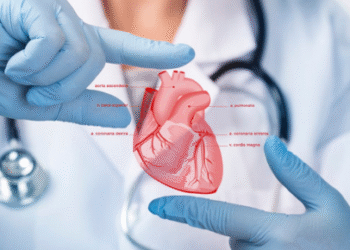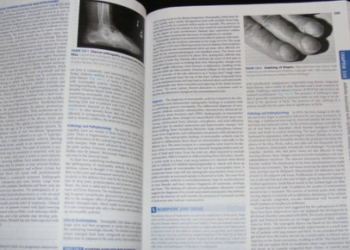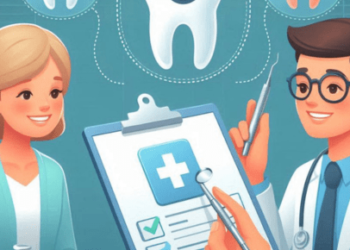1. Chickenpox and hand, foot, and mouth disease (HFMD) are both common viral infections that primarily affect children. While they share some similarities in symptoms, causes, and modes of transmission, there are significant differences between the two illnesses that warrant understanding.
2. Causes: Viral Origins of Chickenpox
Chickenpox is caused by the varicella-zoster virus (VZV), a member of the herpesvirus family. It spreads through respiratory droplets from coughing or sneezing, as well as direct contact with fluid from the blisters of an infected person.
3. Causes: Understanding Hand, Foot, and Mouth Disease
Hand, foot, and mouth disease is primarily caused by enteroviruses, particularly Coxsackievirus A16 and Enterovirus 71. These viruses are highly contagious and spread through close personal contact, as well as contact with contaminated surfaces or fecal matter.
4. Symptoms: Identifying Chickenpox
Chickenpox typically begins with a fever, headache, and loss of appetite, followed by the characteristic rash. The rash starts as red spots that progress to fluid-filled blisters, which eventually crust over. It can appear anywhere on the body, including the scalp, face, trunk, and limbs.
5. Symptoms: Recognizing Hand, Foot, and Mouth Disease
Hand, foot, and mouth disease presents with fever, sore throat, and a rash that affects the hands, feet, and mouth. The rash consists of small, red spots or blisters on the palms of the hands, soles of the feet, and inside the mouth, including the tongue, gums, and throat.
6. Incubation Period: Chickenpox
The incubation period for chickenpox is typically 10 to 21 days after exposure to the virus. This means that symptoms may not appear until several days after a person has been infected, during which time they can unknowingly spread the virus to others.
7. Incubation Period: Hand, Foot, and Mouth Disease
The incubation period for hand, foot, and mouth disease is shorter, ranging from 3 to 6 days after exposure. Symptoms usually manifest within a week of being infected with the virus, allowing for a relatively rapid onset of illness.
8. Contagiousness: Chickenpox
Chickenpox is highly contagious, with the potential for transmission from one person to another through respiratory secretions or direct contact with the rash. Infected individuals are contagious from 1 to 2 days before the rash appears until all blisters have crusted over.
9. Contagiousness: Hand, Foot, and Mouth Disease
Hand, foot, and mouth disease is also highly contagious, primarily through the spread of respiratory droplets, saliva, or fecal matter. Infected individuals can remain contagious for several weeks, even after symptoms have resolved, making prevention challenging.
10. Complications: Chickenpox
Chickenpox can lead to complications, particularly in adults, newborns, and individuals with weakened immune systems. These complications may include bacterial skin infections, pneumonia, encephalitis (brain inflammation), and in rare cases, Reye’s syndrome.
11. Complications: Hand, Foot, and Mouth Disease
Hand, foot, and mouth disease is usually mild and self-limiting, with most cases resolving on their own without complications. However, in rare instances, severe complications such as viral meningitis, encephalitis, or myocarditis (heart inflammation) may occur.
12. Treatment: Chickenpox
Treatment for chickenpox focuses on relieving symptoms and preventing complications. This may include over-the-counter medications to reduce fever and itching, antiviral medications for high-risk individuals, and topical treatments for skin lesions.
13. Treatment: Hand, Foot, and Mouth Disease
Treatment for hand, foot, and mouth disease is primarily supportive, as there is no specific antiviral therapy available. Over-the-counter pain relievers may help alleviate fever and discomfort, while topical analgesics can provide relief for mouth sores.
14. Prevention: Chickenpox
Prevention of chickenpox primarily involves vaccination with the varicella vaccine, which is routinely recommended for children and adults who have not had chickenpox or been vaccinated. Vaccination helps reduce the risk of infection and complications associated with the disease.
15. Prevention: Hand, Foot, and Mouth Disease
Preventing hand, foot, and mouth disease involves practicing good hygiene habits, such as frequent handwashing with soap and water, especially after using the toilet or changing diapers, and avoiding close contact with individuals who are sick.
16. Immunity: Chickenpox
Natural infection with chickenpox confers lifelong immunity in most cases, although reinfection with the varicella-zoster virus can occur later in life, leading to shingles (herpes zoster).
17. Immunity: Hand, Foot, and Mouth Disease
While infection with hand, foot, and mouth disease typically results in temporary immunity to the specific strain of virus, reinfection with other strains or related enteroviruses is possible.
18. Impact: Chickenpox
Chickenpox can cause significant disruptions due to its contagious nature and potential for complications, leading to missed school or work days, healthcare visits, and in severe cases, hospitalization.
19. Impact: Hand, Foot, and Mouth Disease
Hand, foot, and mouth disease often affects young children and can result in discomfort and inconvenience due to symptoms such as fever, sore throat, and mouth sores. While most cases are mild and resolve on their own, outbreaks in childcare settings or communities can lead to temporary closures and public health interventions.
20. Seasonality: Chickenpox
Chickenpox can occur throughout the year but tends to peak in the late winter and early spring months.
21. Seasonality: Hand, Foot, and Mouth Disease
Hand, foot, and mouth disease is more prevalent during the warmer months, particularly in tropical and subtropical regions, although cases can occur year-round in temperate climates.
22. Diagnosis: Chickenpox
Diagnosis of chickenpox is often based on clinical symptoms, including the characteristic rash and associated symptoms such as fever and malaise. Laboratory tests, such as viral culture or polymerase chain reaction (PCR), may be performed in certain cases to confirm the diagnosis.
23. Diagnosis: Hand, Foot, and Mouth Disease
Diagnosis of hand, foot, and mouth disease is primarily clinical, based on the characteristic symptoms and rash pattern. Laboratory testing is usually not necessary unless complications or atypical presentations are suspected.
24. Public Health Measures: Chickenpox
Public health measures for chickenpox include vaccination programs, outbreak management, and educational campaigns to raise awareness about the importance of vaccination and prevention strategies.
25. Public Health Measures: Hand, Foot, and Mouth Disease
Public health measures for hand, foot, and mouth disease focus on promoting good hygiene practices, early detection and management of cases, and communication with childcare facilities and communities to prevent outbreaks and minimize transmission.













